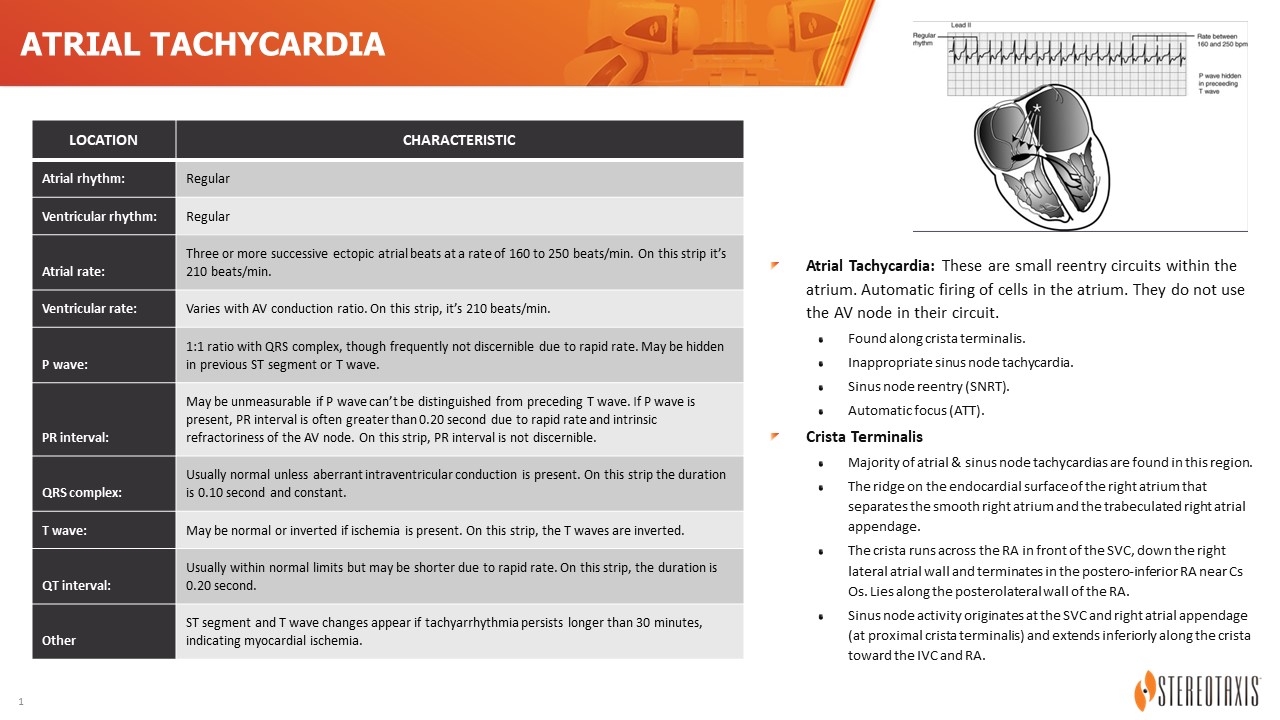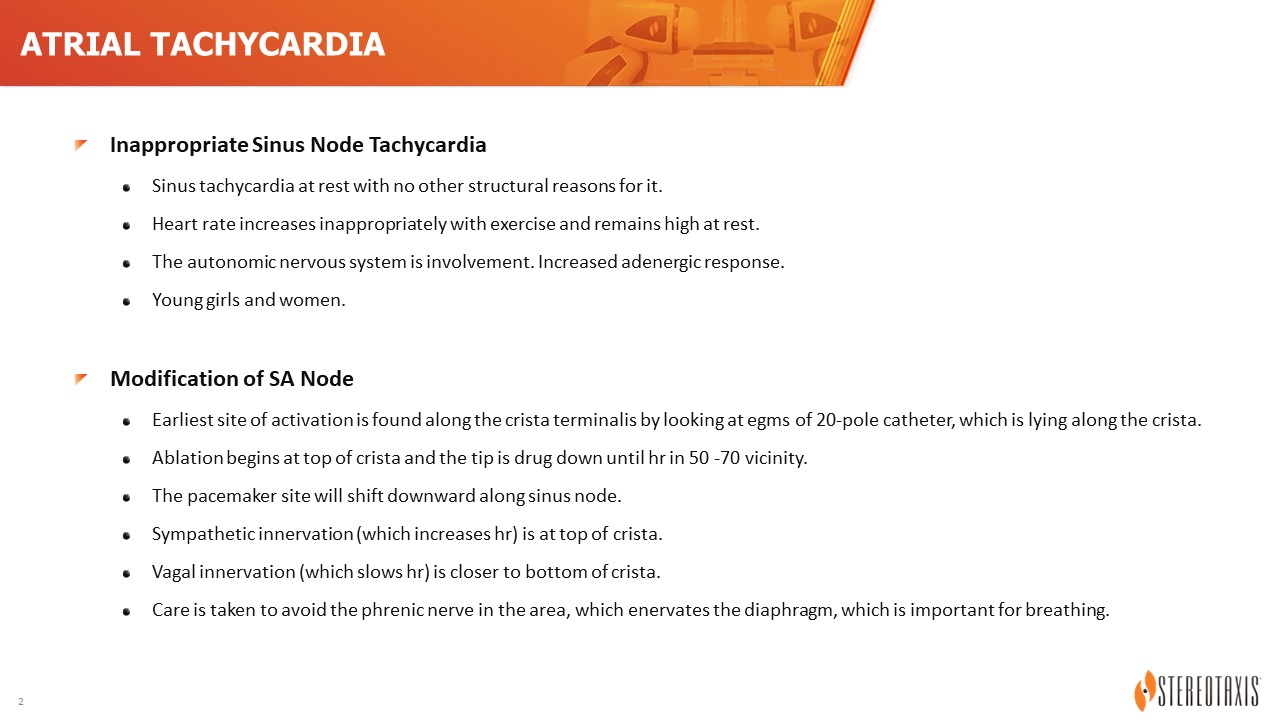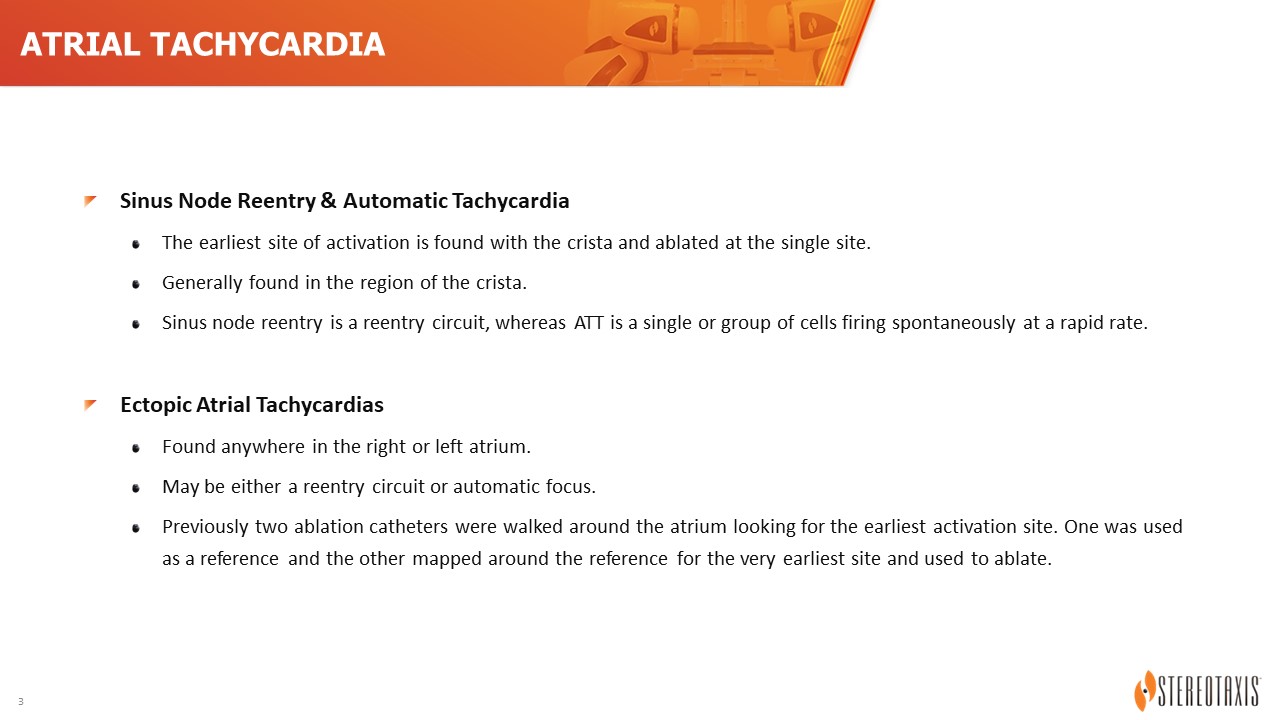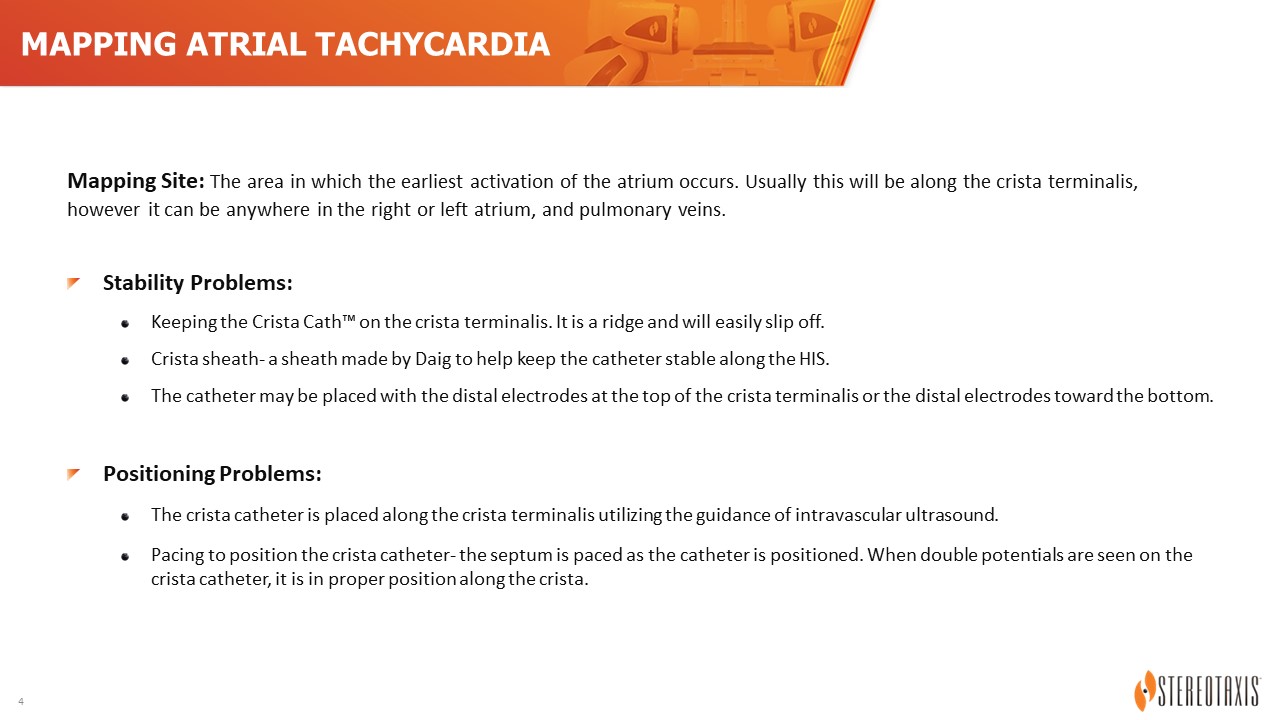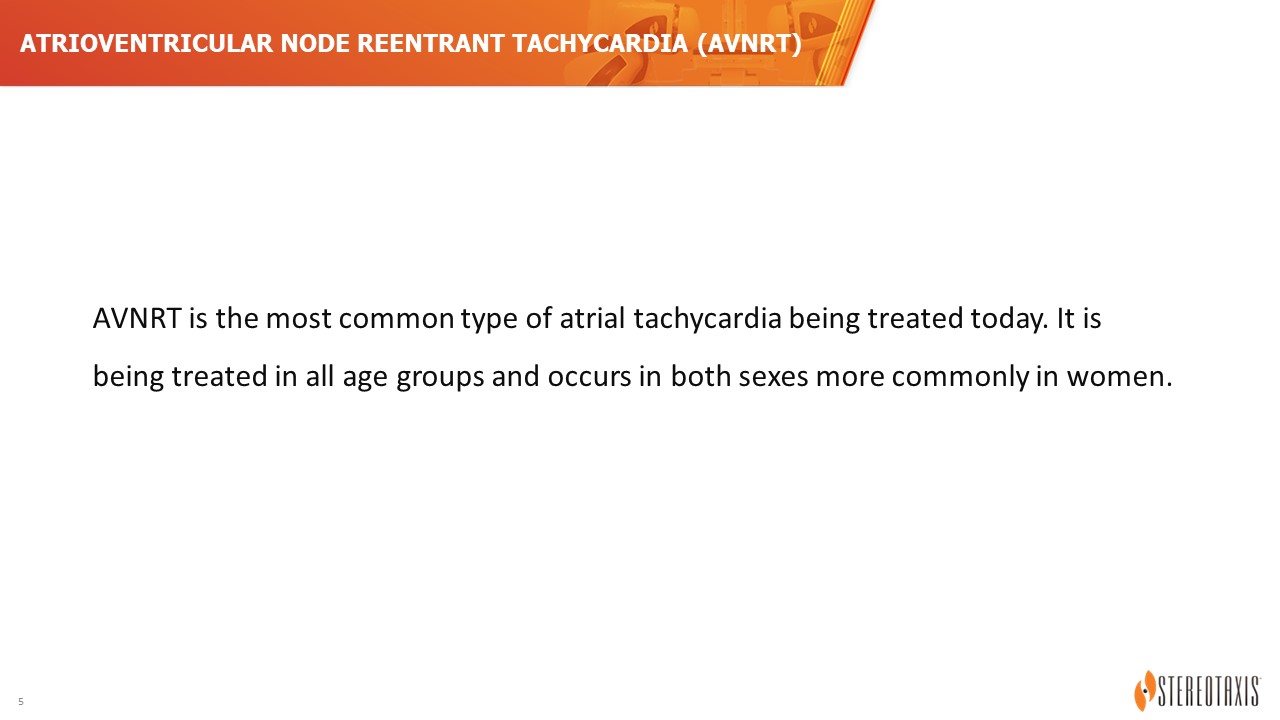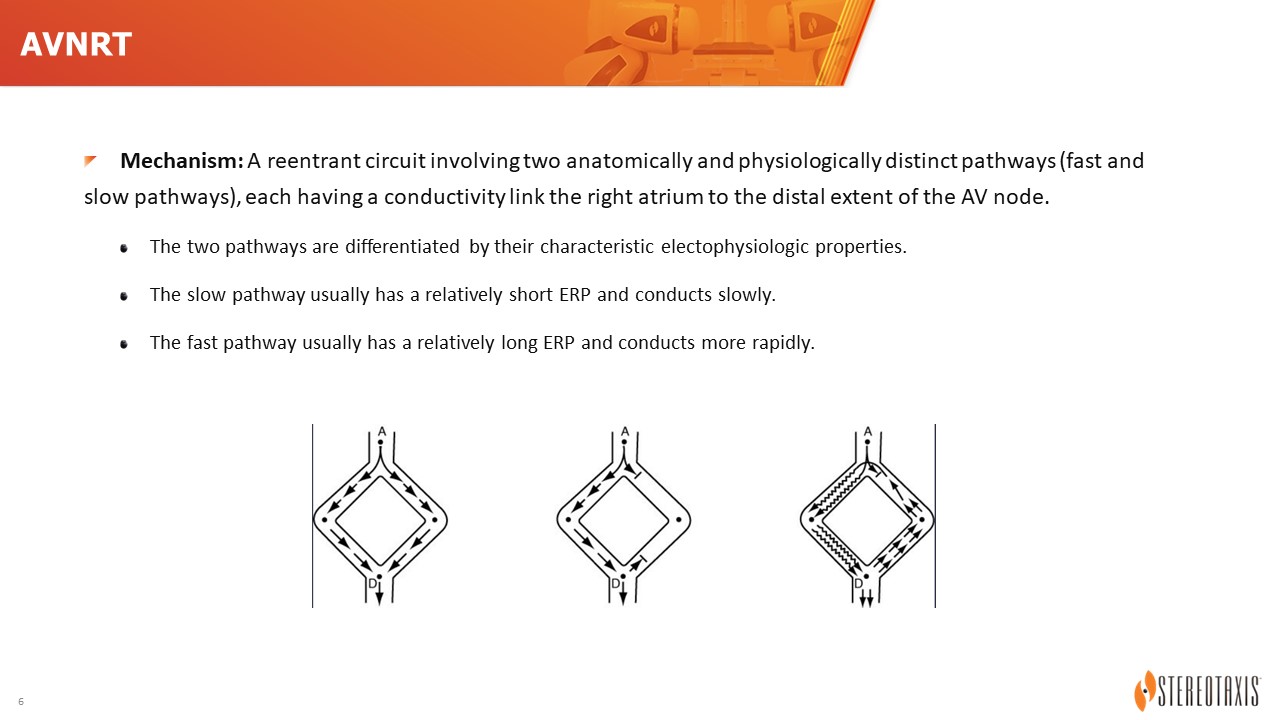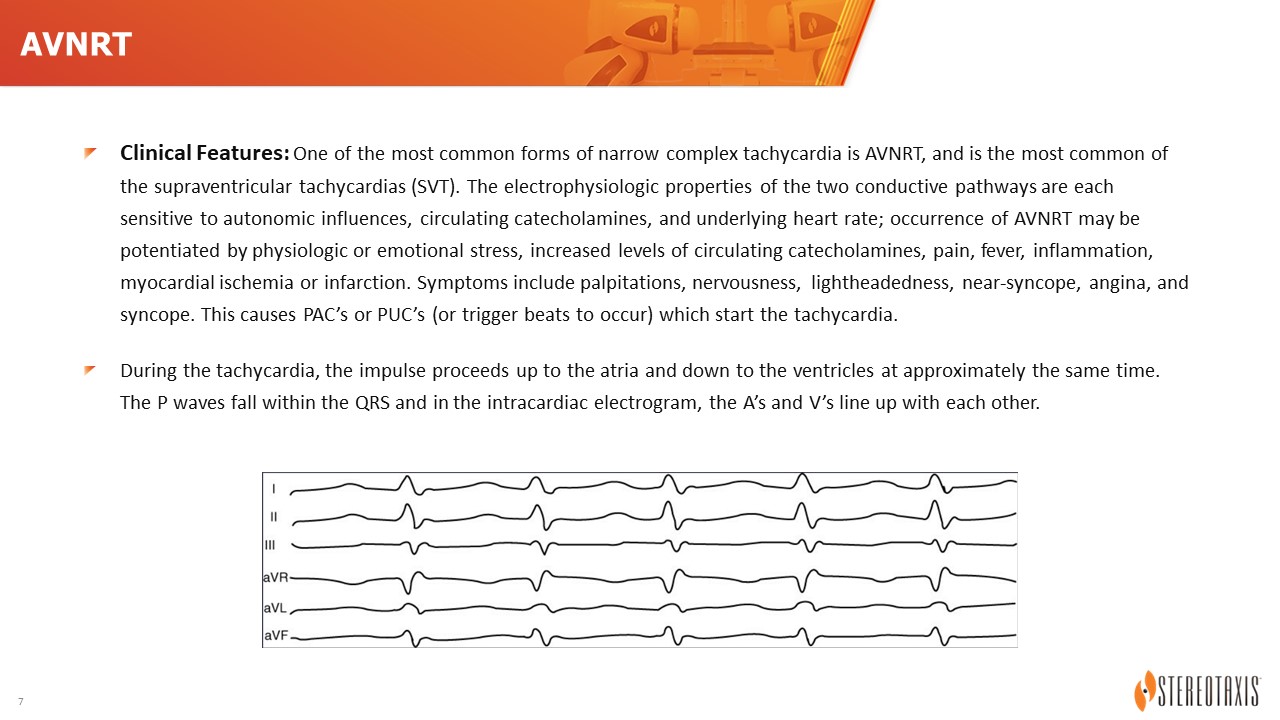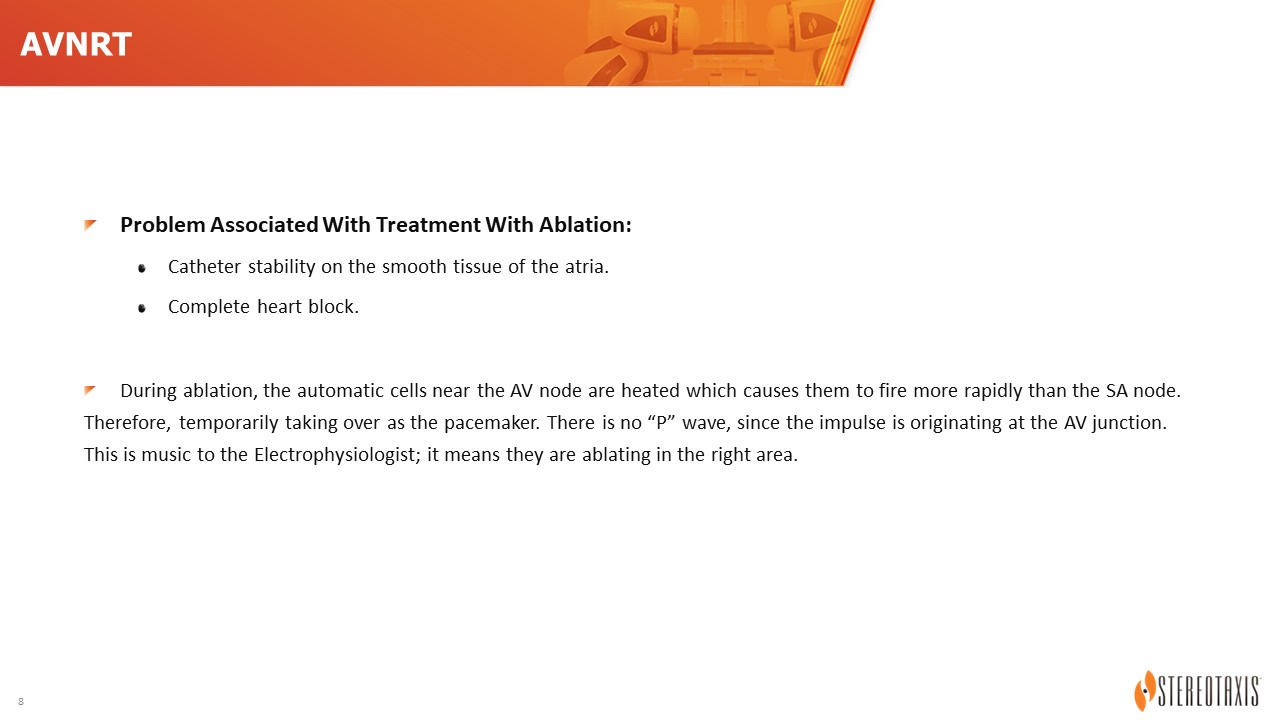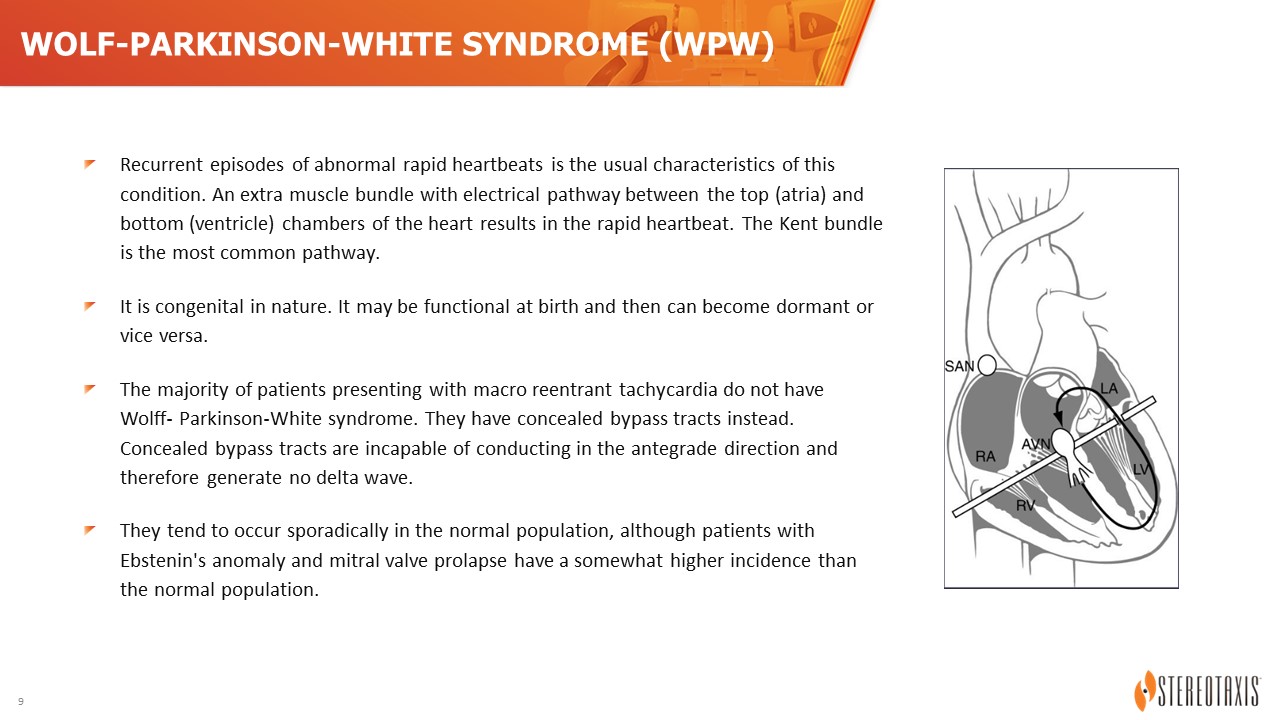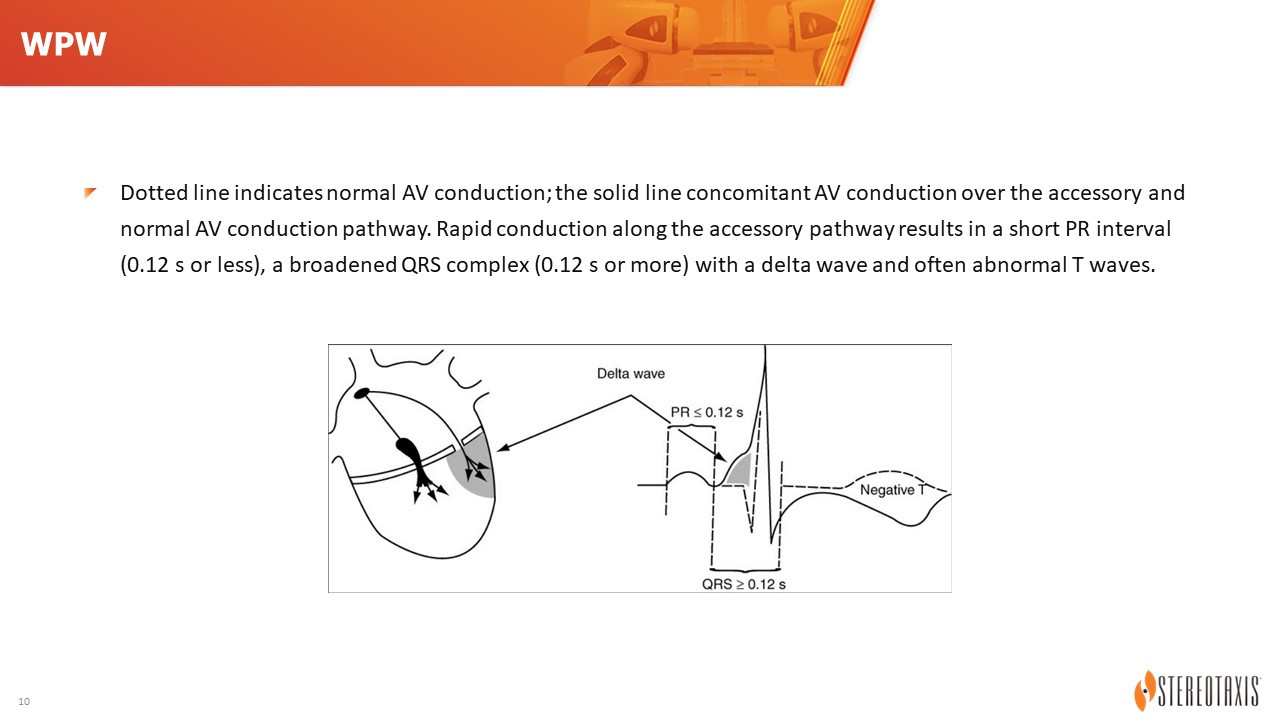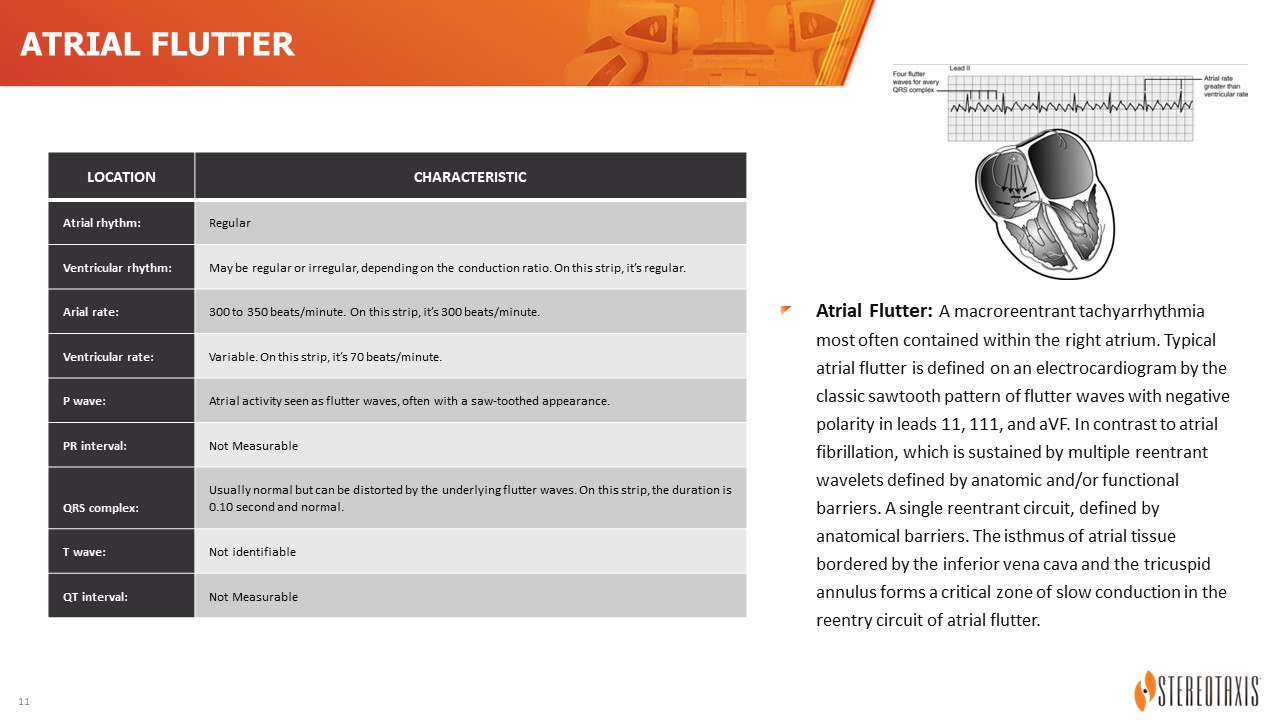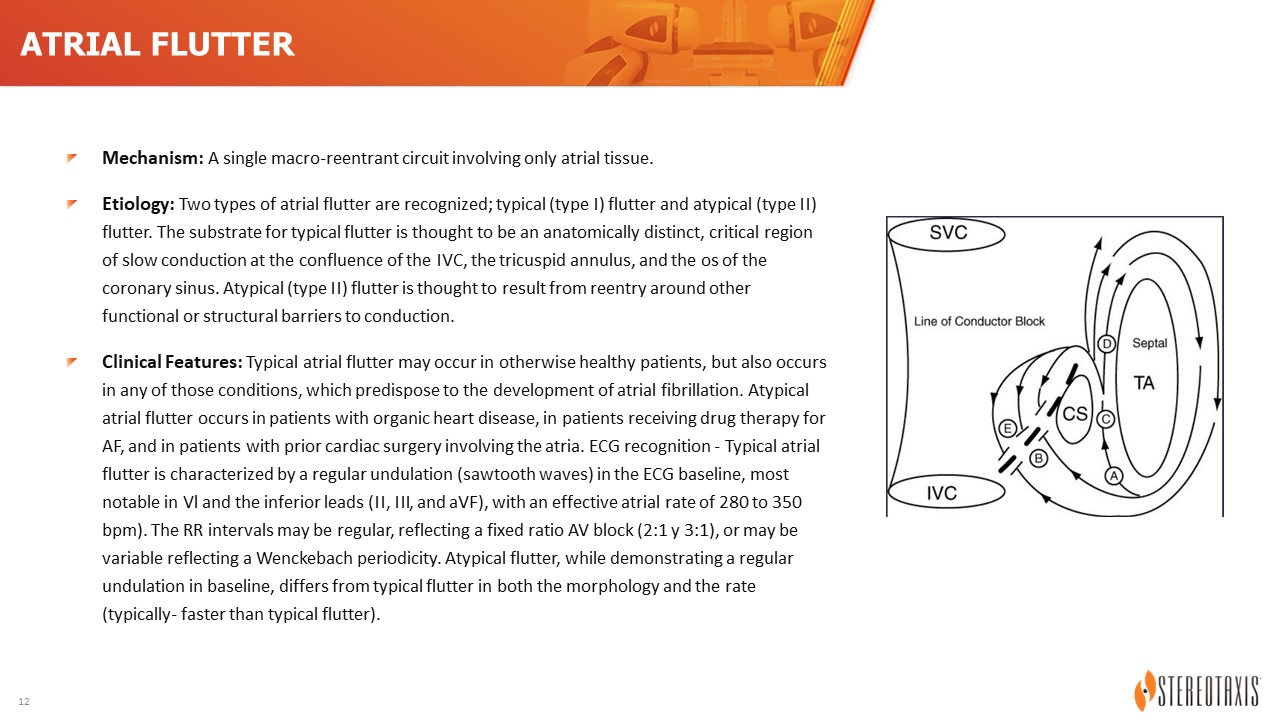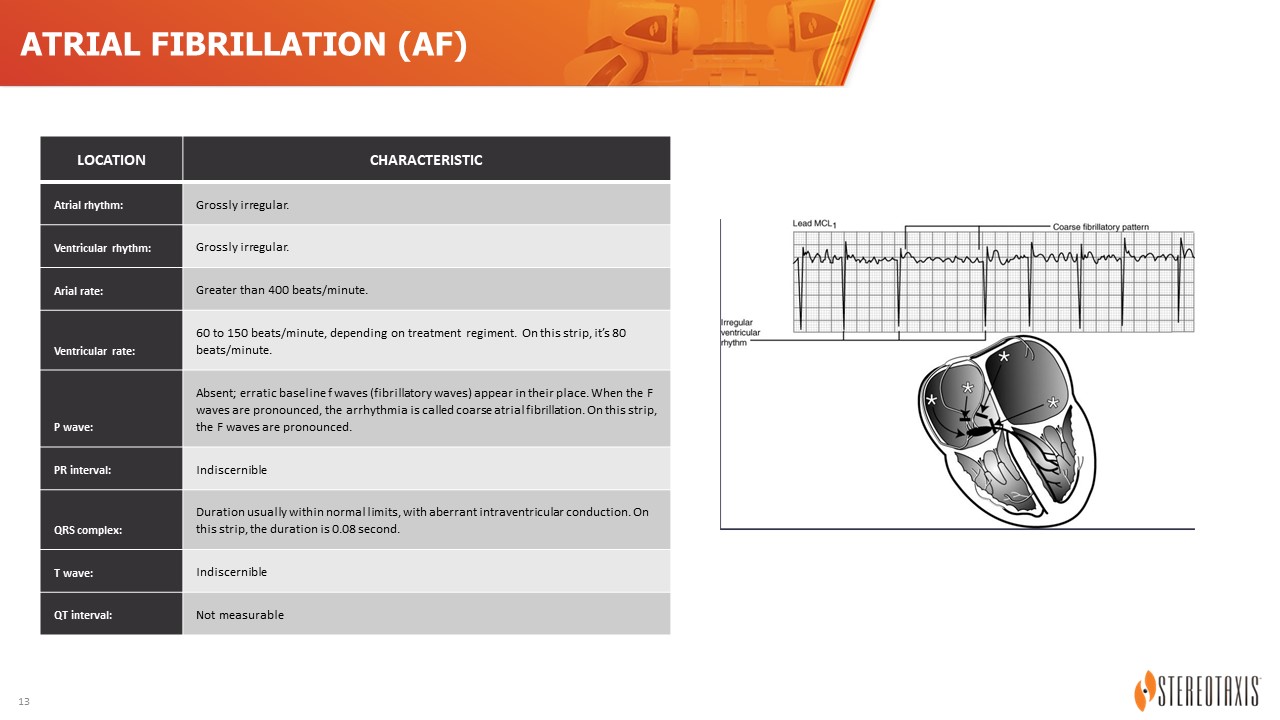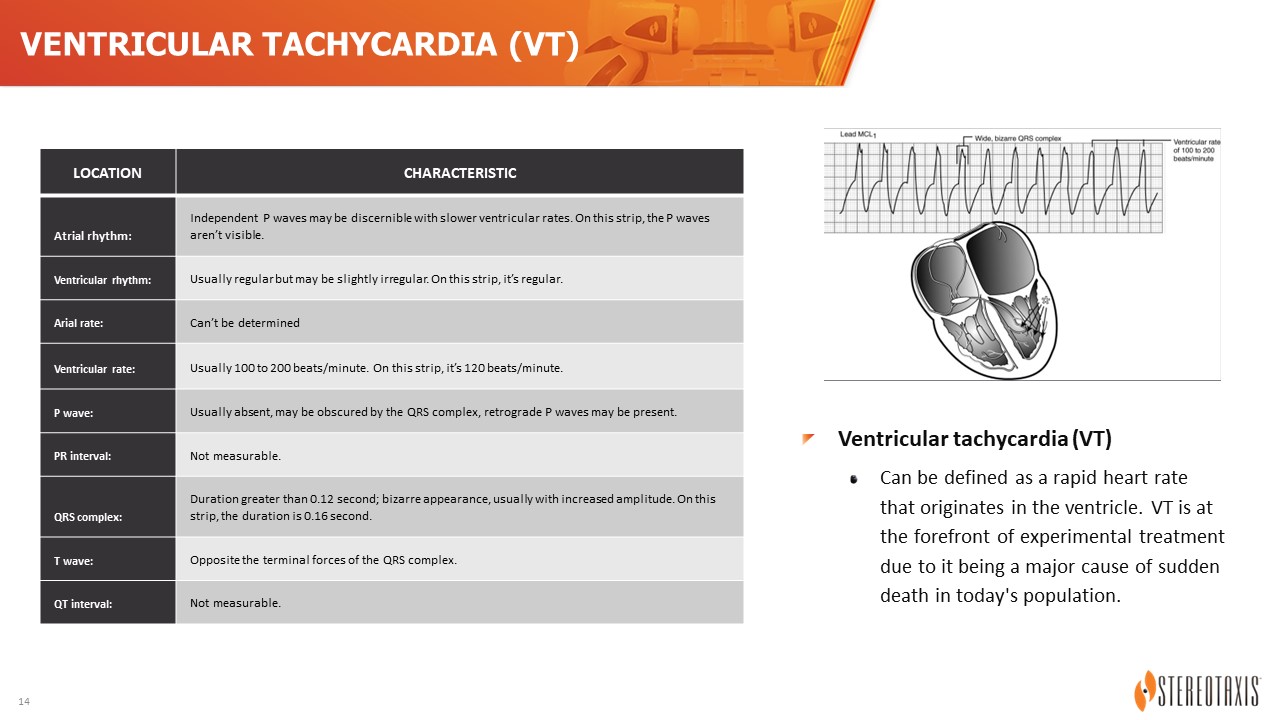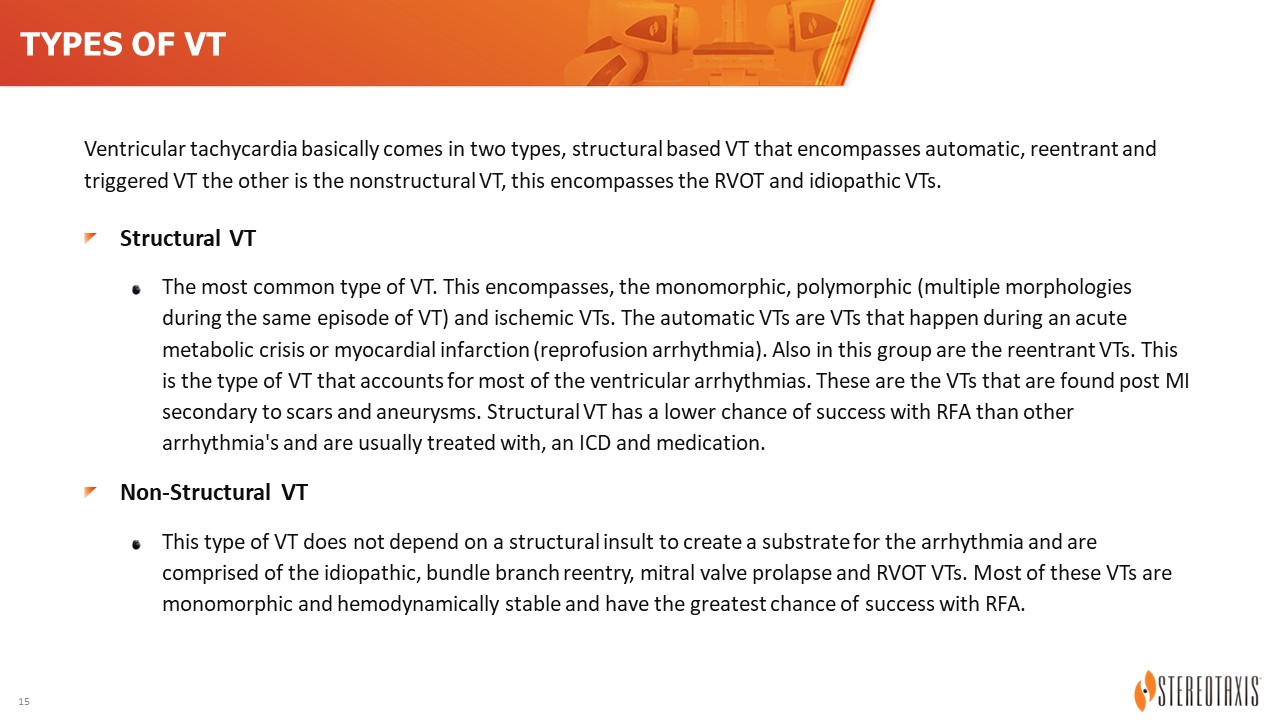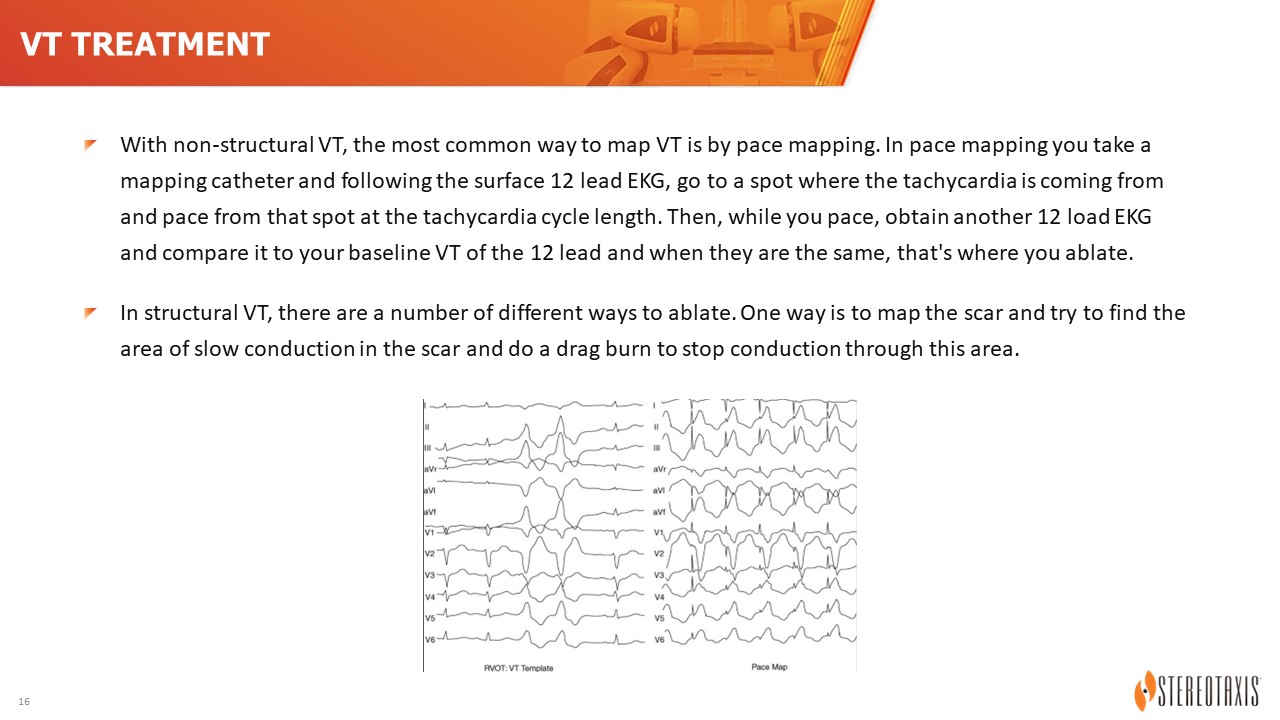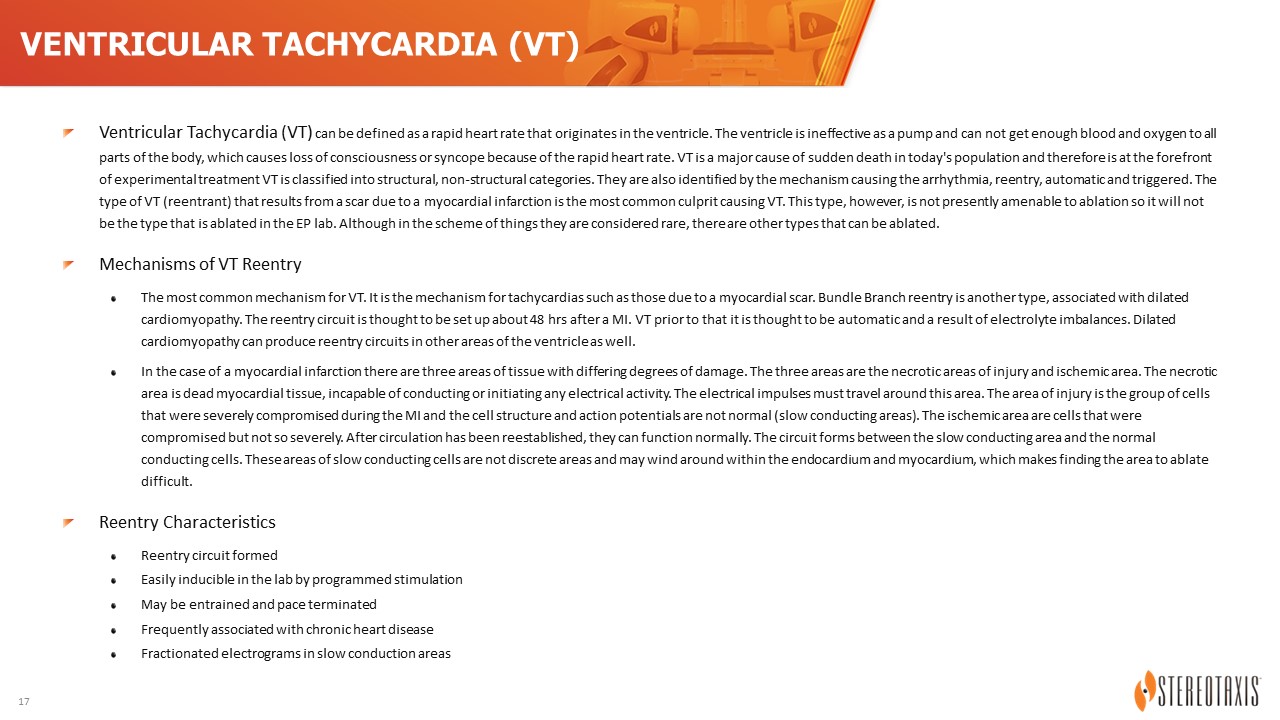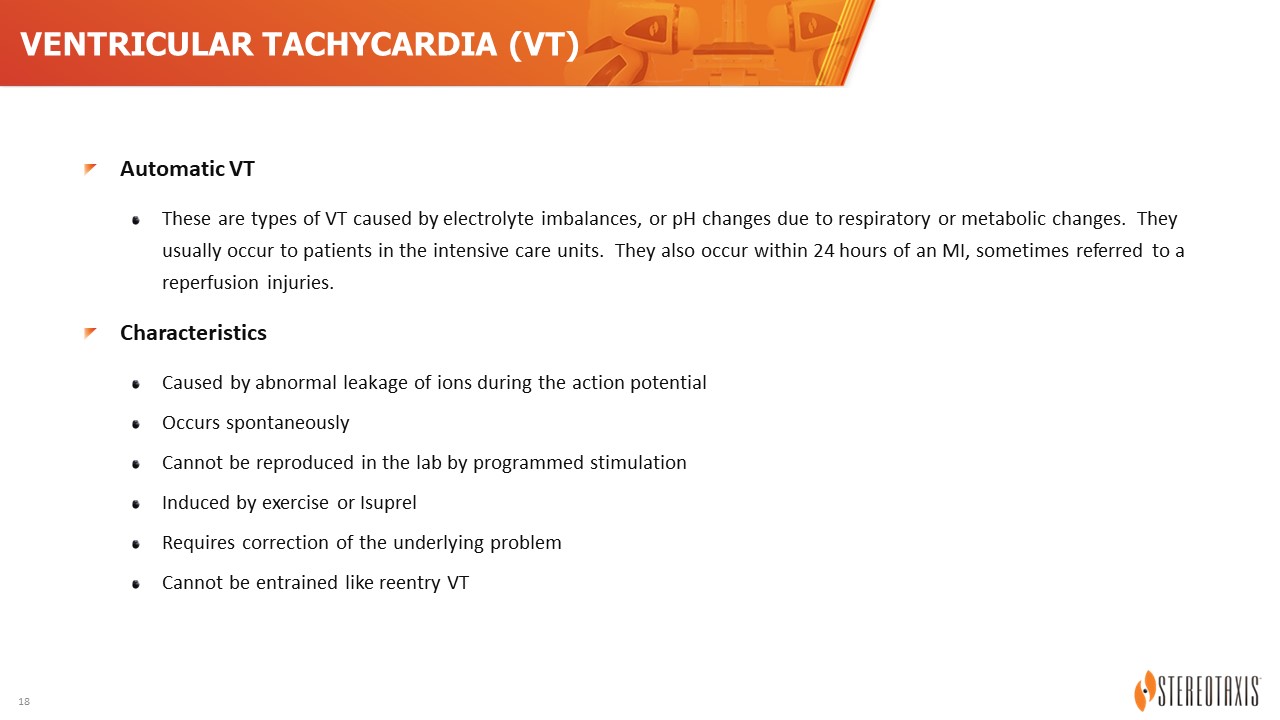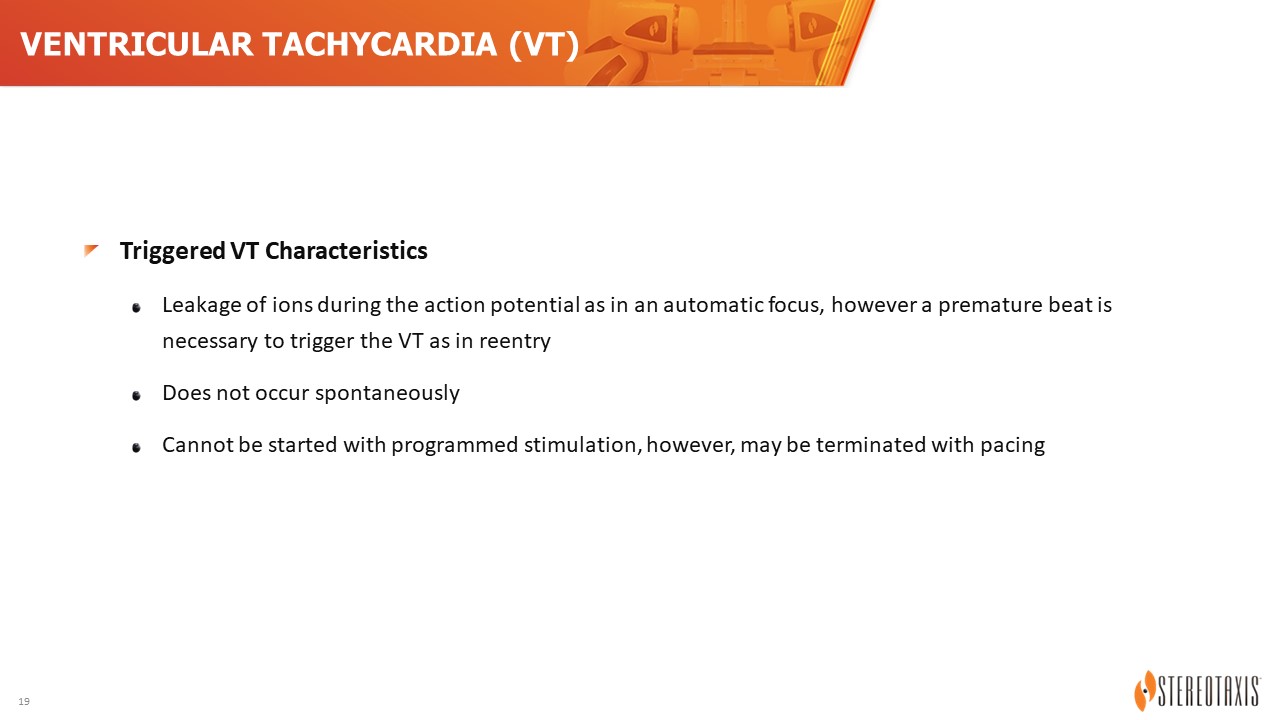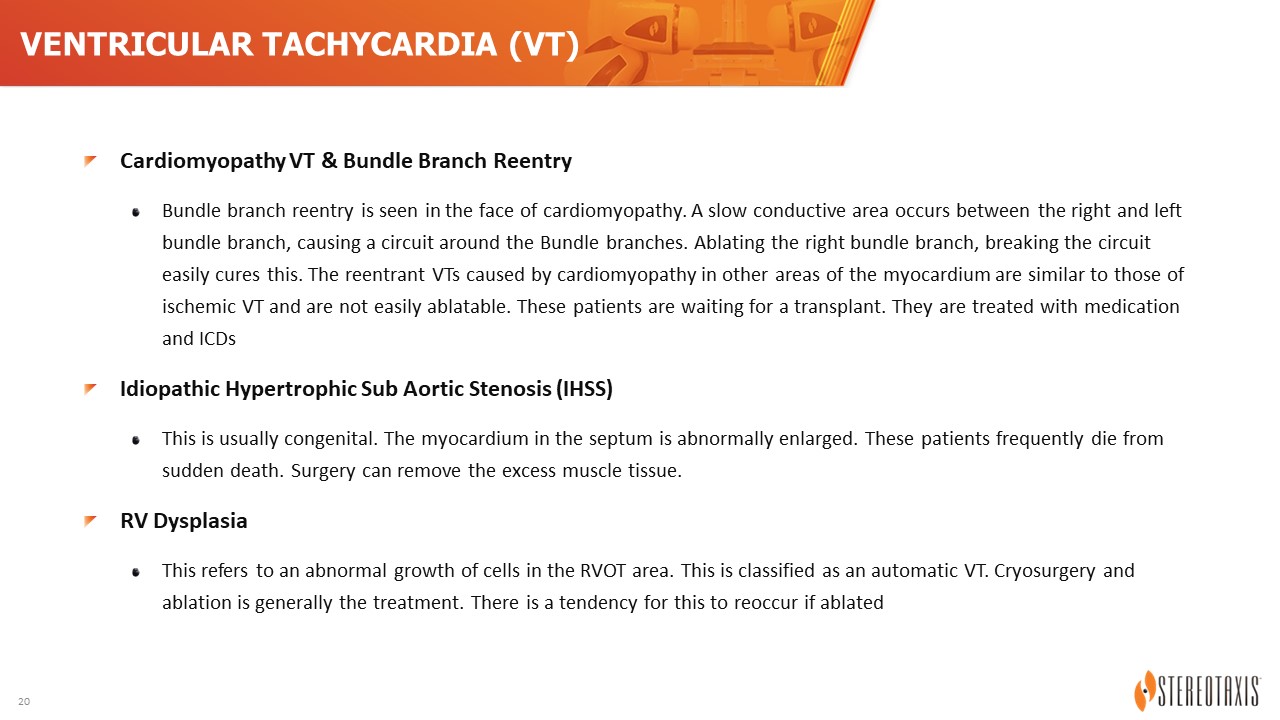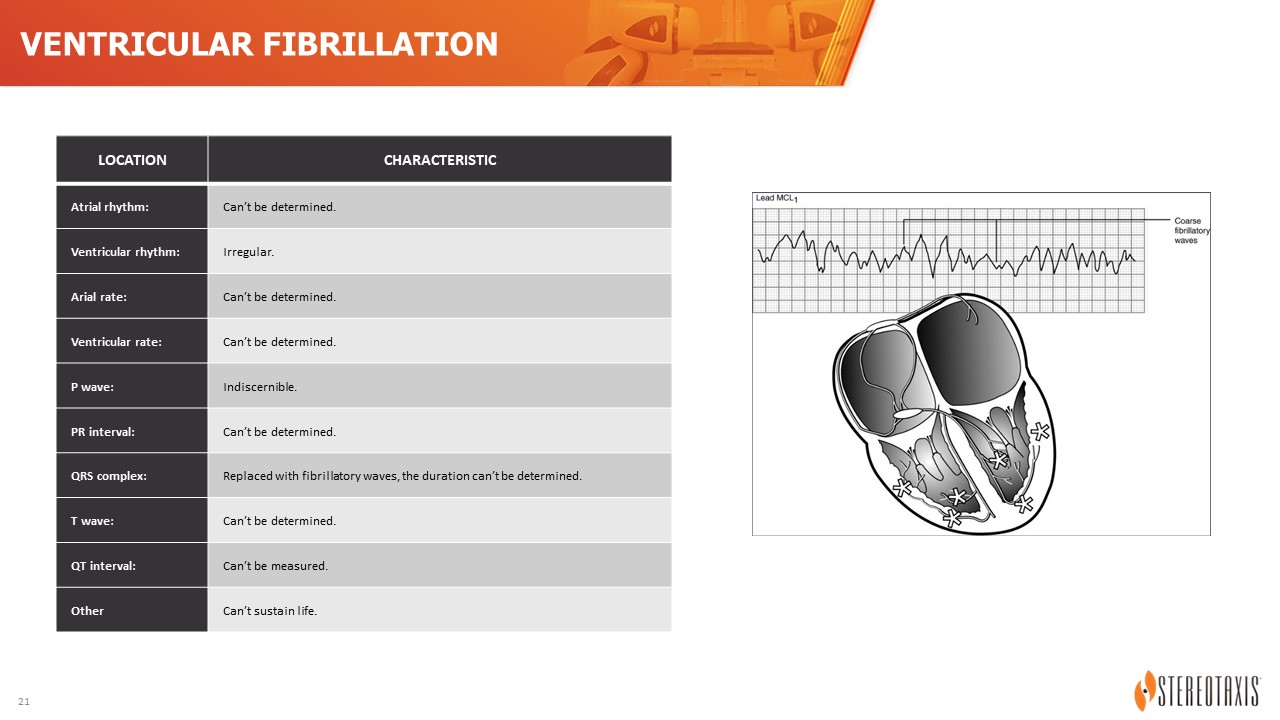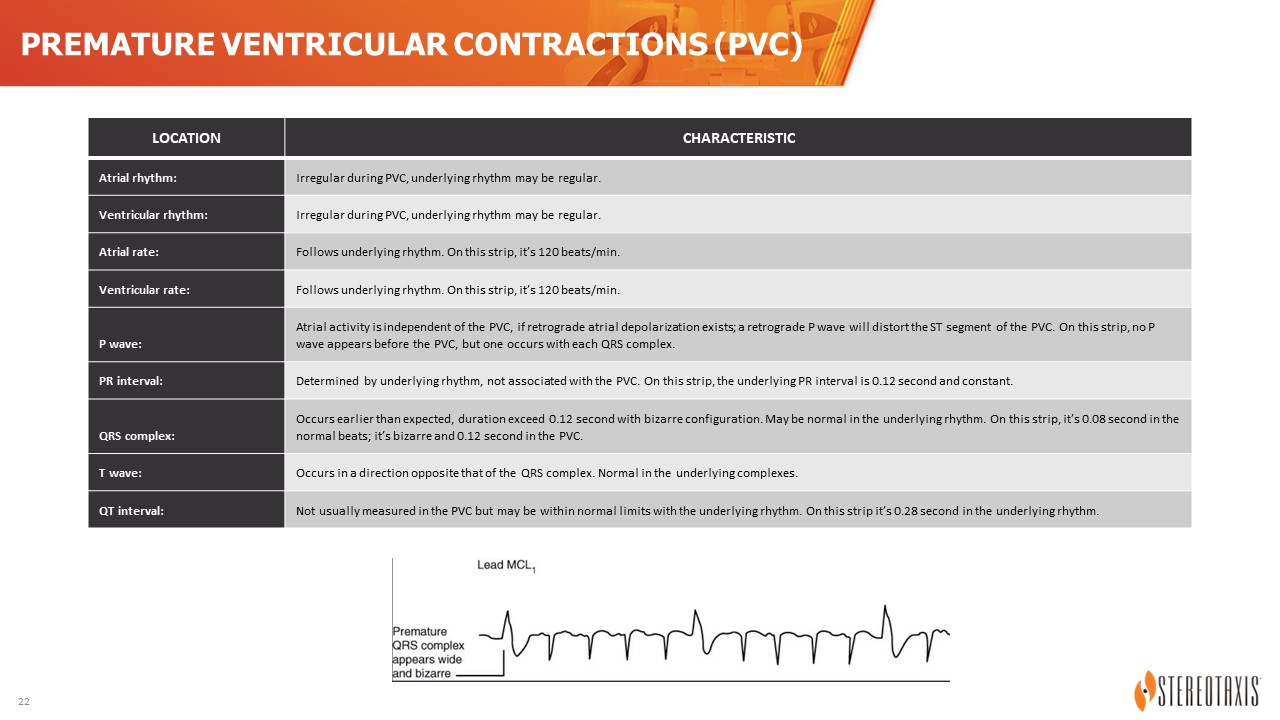Atrial Tachycardia
Objectives:
- Understand what types of arrhythmias the category of atrial tachycardias encompasses.
- Describe two mechanisms causing atrial tachycardias.
- Describe the area that most of the atrial tachycardias are found.
- Describe two difficulties the physician might encounter in ablating in these areas.
- Describe and identify the location of the crista terminalis.
AVNRT
Objectives:
- Describe the concept of dual AV nodal physiology.
- Understand where the reentry loop occurs.
- Identify the triangle of Koch and its relevance to the ablation.
- Identify and describe in detail the area the ablation for AVNRT takes place.
- Describe what rhythm helps determines success during each burn.
Videos
AVRNT (atrioventricular re-entry tachycardia) - causes, pathophysiology, treatment
Wolff‑Parkinson‑White syndrome
Objectives:
- Understand the etiology of accessory pathways.
- Describe where these pathways can be found.
- Understand the percentage of ablations this arrhythmia represents.
- How the Kent bundle is associated with WPW.
- Understand the role of the coronary sinus catheter in WPW.
- Describe the two changes commonly seen on a surface EKG.
- Explain changes seen on the surface EKG suggesting a successful ablation.
- Describe what length of a burn signals a successful ablation or reoccurrence is unlikely.
Videos
WPW: Explanation and Treatment
Atrial Flutter
Objectives:
- Describe the two types of flutter and features that differentiate them.
- Describe the location and characteristics of the isthmus, where the ablation for typical flutter takes place.
- Describe where the ablation lines are placed for typical flutter using appropriate anatomical terms.
- Describe the concept of the line of block.
Videos
Atrial Flutter
Atrial Fibrillation
Objectives:
- Identify the salient features of a surface EKG of atrial fibrillation.
- Describe physiologically what is happening during atrial fibrillation.
- Describe the long-term effects of atrial fibrillation.
- Describe the current therapeutic treatment of atrial fibrillation.
- Understand what percentage atrial fibrillation represents in the market place.
Videos
Atrial fibrillation (A-fib, AF) - causes, symptoms, treatment & pathology
Ventricular Tachycardia
Objectives:
- Identify ventricular tachycardia on the surface EKG.
- Identify ventricular fibrillation on surface EKG.
- Understand the different mechanisms of ventricular tachycardia.
- Understand the problems associated with ablation of ischemic ventricular tachycardia.
Videos
Ventricular tachycardia (VT) - causes, symptoms, diagnosis, treatment & pathology
Ventricular Fibrillation
Objectives:
- Understand the mechanism of action of VF.
- Learn how VF is treated.
- Identify the hemodynamic effects of VF.
Premature Ventricular Contractions
Objectives:
- Identify typical sites of origin of PVCs.
- Define PVC burden.
- Describe treatments used to control PVCs.
Videos
Premature Ventricular Contraction - causes, symptoms, diagnosis, treatment, pathology

STOP
Please take the Arrhythmias Assessment in Dot Compliance



